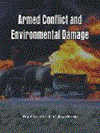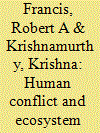|
|
|
Sort Order |
|
|
|
Items / Page
|
|
|
|
|
|
|
| Srl | Item |
| 1 |
ID:
132983


|
|
|
|
|
| Publication |
New Delhi, Vij Books India Pvt Ltd, 2014.
|
| Description |
xii, 362p.Hbk
|
| Standard Number |
9789382652779
|
|
|
|
|
|
|
|
|
|
|
|
Copies: C:1/I:0,R:0,Q:0
Circulation
| Accession# | Call# | Current Location | Status | Policy | Location |
| 057850 | 355.02/JHA 057850 | Main | On Shelf | General | |
|
|
|
|
| 2 |
ID:
162897


|
|
|
|
|
| Summary/Abstract |
We use a detailed power sector model, E4ST, to project multi-decade effects of preventing a set of unprofitable generators from retiring. We simulate the “Grid Resiliency Pricing Rule” proposed by the US Department of Energy in 2017, and several variations, as an illustrative case study for similar national, regional, or state policies in the US or elsewhere. In the proposed policy, eligible coal and nuclear generators would be guaranteed revenues sufficient to ensure profitability. The simulation results show that, in 2025, $7.6 billion in subsidy is required to guarantee coal and nuclear generator profits. If in effect from 2020 to 2045, the policy delays the retirement of 25 GW of coal capacity and 21 GW of nuclear capacity, causes 27,000 premature deaths, increases carbon dioxide emissions by 420 million short tons, and has costs with a net present value of $263 billion during that period. The policy's net non-environmental cost for electricity end-users is $72 billion and net benefit for generation owners is $28 billion. In alternative scenarios, preventing retirement of only nuclear capacity produces positive total net benefit, while guaranteeing recovery of only going-forward costs shifts $77 billion of costs from customers to generators, but does not reduce emissions or total net cost.
|
|
|
|
|
|
|
|
|
|
|
|
|
|
|
|
| 3 |
ID:
133286


|
|
|
|
|
| Publication |
2014.
|
| Summary/Abstract |
Environmental degradation resulting from warfare is a growing concern, particularly with increasing recognition of humanity's dependence on healthy ecosystems. Though environmental legislation does exist that seeks to prevent or mitigate environmental harm before, during and after conflict, it has limited scope and effectiveness. This may be one reason why the environmental laws of war are so rarely applied in attempts to bring parties responsible for environmental harm to justice. Enforcement of such legal instruments also requires appropriate quantification of environmental damage, which is particularly difficult in a warfare context. A focus on the loss of environmental resources, habitats or ecosystems is only part of the story-the real cost of environmental damage is in the loss of ecosystem services that such resources provide, both now and in the future, and which regional and global human societies depend upon. The ecosystem services framework, wherein the costs of damage to ecosystem services are quantified in economic terms, may prove a more effective way of highlighting the environmental damage resulting from warfare. Moreover, quantification along monetary lines is potentially more likely to establish a solid case for justifiable reparations than criteria relating to loss of biodiversity or ecosystem health, which are more difficult for society and governmental agencies to place specific values on. This article discusses the ecosystem services framework in the context of warfare, and highlights both the potential and the challenges that may accompany adoption of such a framework by the international community.
|
|
|
|
|
|
|
|
|
|
|
|
|
|
|
|
| 4 |
ID:
141483


|
|
|
|
|
| Summary/Abstract |
Much study has focussed upon the legality of, as well as justifications for, military activities of States causing environmental damage in times of armed conflict, with particular reference to norms of international humanitarian law. However, in preparation for potential armed conflict, such military activities may also take place before the commencement of any such armed conflict. This paper seeks to explore the environmental protection obligations of States under international law in their conduct of military activities in anticipation of armed conflict. On the one hand, peacetime obligations entailing environmental protection, which may be derived not only from international environmental law but also other fields such as international human rights law and international investment law, would generally apply during the pre-conflict stage. On the other hand, it is also observed that there may be legal justifications for deviation from such obligations in particular circumstances in connection with the pre-conflict situation, for instance, by reliance upon exception clauses within the relevant treaties, suspension of primary obligations due to circumstances such as the needs of national security, as well as invocation of circumstances precluding wrongfulness under the law of State responsibility.
|
|
|
|
|
|
|
|
|
|
|
|
|
|
|
|
|
|
|
|
|